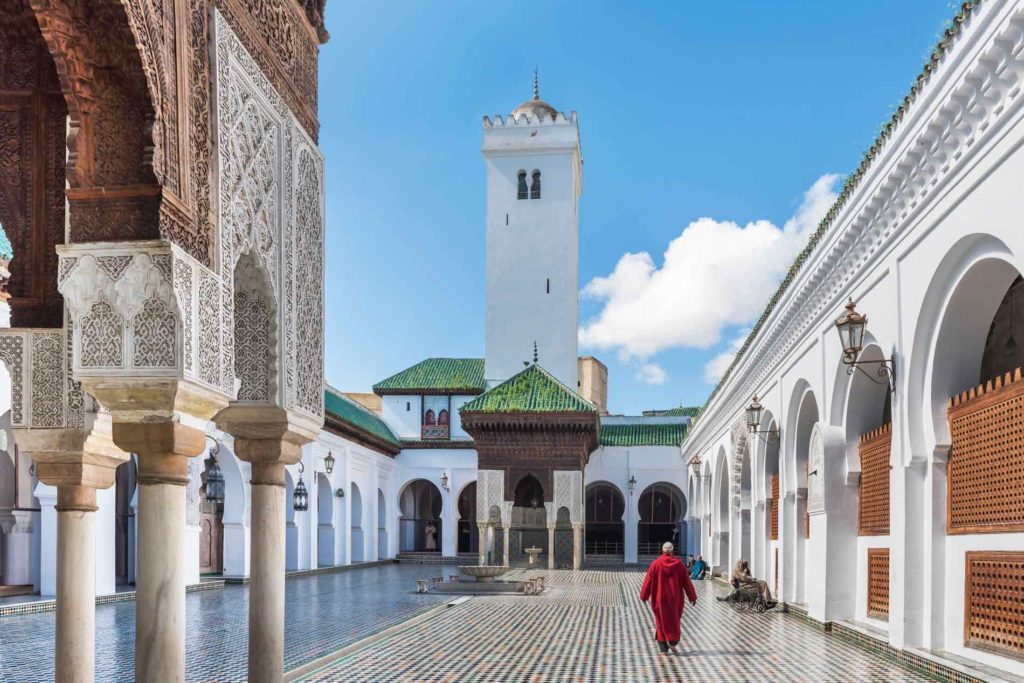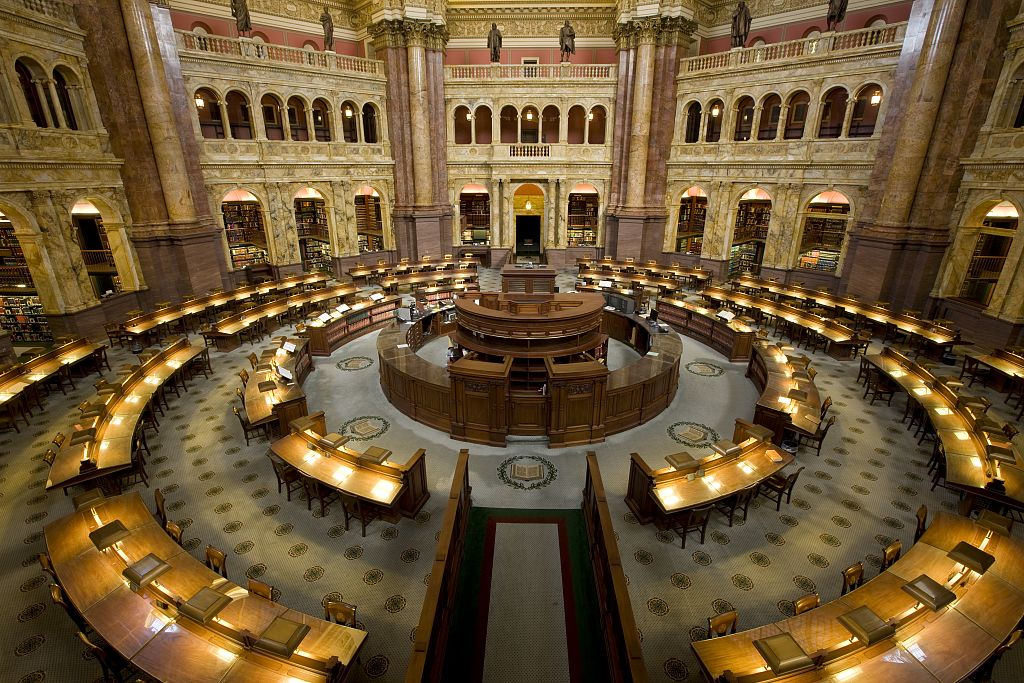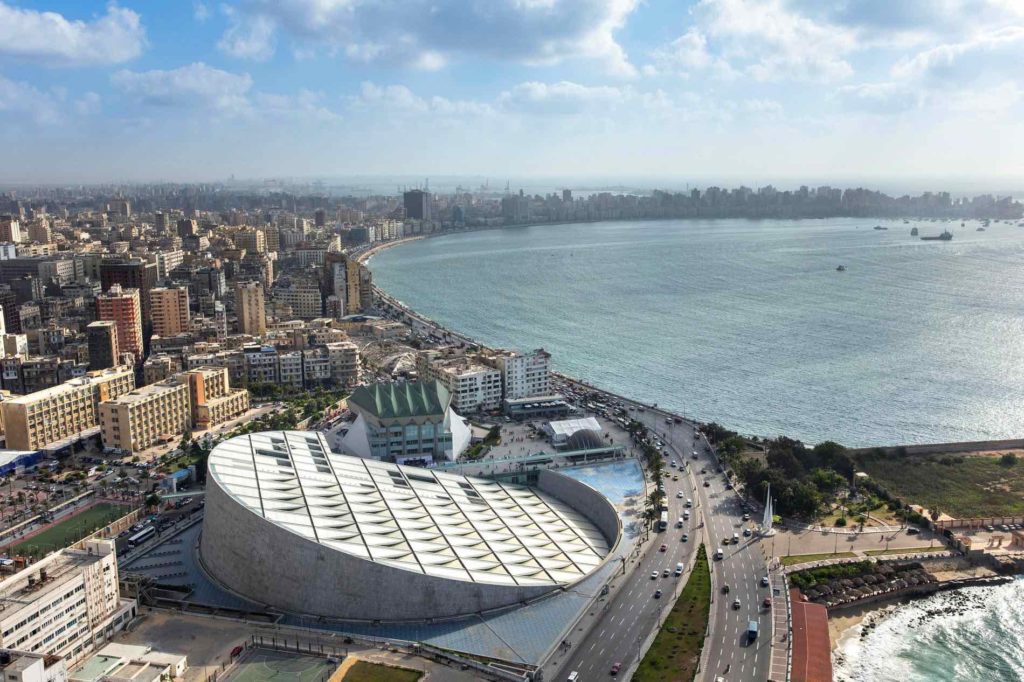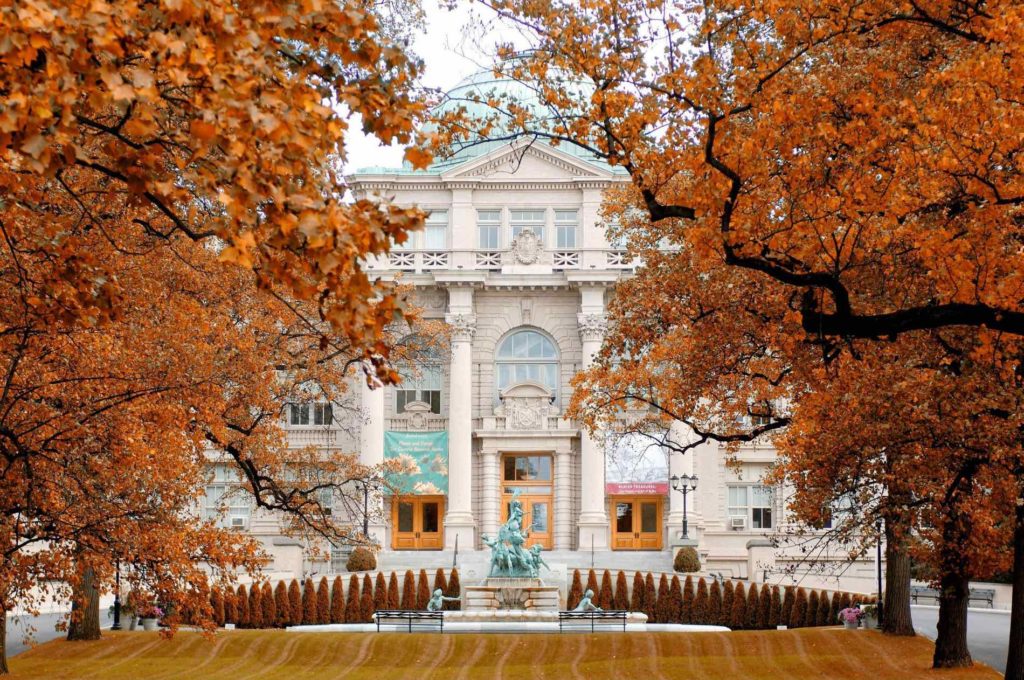A cab driver once told me that, at the age of eight, he walked 10 miles from his Egyptian hometown in search of a private library rumored to have a copy of Nizar Qabbani’s Arabian Love Poems. Disregarding Washington D.C.’s late-night club-goers jaywalking outside the taxi, he drove me home swooning, reciting verses from another book he’d discovered on that journey.
—Kahlil Gibran’s The Prophet.
A good library is always worth the trip for what we might find there, whether it is 10 miles away or 10 countries away, whether the books are two inches high or two stories high, whether they arrive via donkey, camel, boat, or bike. And while any library can lead us to a new literary discovery, the following 14 epic libraries around the globe take typical book appreciation to a whole new level.

1. Switzerland

Ninth-century illuminated manuscripts and the earliest known architectural plan drawn on parchment are just some of the literary treasures at the resplendent 1,200-year-old Baroque-style Convent of St Gall in Switzerland.
From our partners:
2. United Kingdom

3. Japan

Every child can love a book by its cover at the international Picture Book Library in Iwaki, Japan. Tall windows provide sunny Pacific views, all the books face forward, and large stair steps provide perfect reading nooks.
4. Morocco

The University of al-Qarawiyyin Library in Fez (one of the oldest operating libraries in the world) was founded by a woman, Fatima al-Fihri, in 859 C.E. Female architect Aziza Chaouni recently restored the space and opened it to the public unveiling ancient mosaics, solar panels, and a café.
5. Washington D.C.

Enjoy Poet Laureate readings, braille and “talking book” collections, and free, themed walking tours at the marble-columned Library of Congress in Washington D.C., where the Great Hall’s 19th-century lunette murals illustrate the “Evolution of the Book.”

6. Egypt

Bibliotheca Alexandrina features a terraced, sunlit reading room, a planetarium, an exhibition of the 1820 Bulaq Press, and the world’s largest collection of digital manuscripts. Its sweeping hieroglyphic walls pay respect to Alexander the Great’s ancient Library of Alexandria.
7. France

Lire à la Plage’s many pop-up libraries have graced French Seine-Maritime beaches for the past decade. The red and white cabanas lend out an eclectic collection of board games, comics, novels and, of course, French poetry.
8. Thailand

Shaped like a giant treehouse (or manta ray), Soneva Kiri’s children’s library boasts suspended reading rooms, rainforest skylights, a music room with Thai instruments and sheet music walls, as well as books on permaculture and local tradition.
9. Germany
Bright white cubic walls grant a Yayoi Kusama-esque pop to a pantheon of books in Stuttgart’s new City Library. Stop at the café, then pass the glass ceiling to the rooftop terrace for brilliant views of Stuttgart’s city center.
10. Vatican City

Galileo’s inky 1633 trial signature, St. Peter’s letters written on papyrus scrolls, and the oldest known Bible in existence are quietly tucked away in the Vatican Library in Rome. Non-scholars should book a guided tour.
11. Burundi

Muyinga’s first library was community-constructed out of locally sourced earthen blocks, clay tiles, and eucalyptus beams. Porch windows open to airy views of Burundi’s “milles collines,” and the children’s reading room offers a wide, sisal-rope-hammock draped between the first and second story.

12. Turkey

Originally built in 117 C.E. atop the tomb of Celsus Polemaeanus, the Library of Celsus’s marble facade lives on in Turkey’s Ephesus city ruins. The entryway’s four Roman figures, which symbolize the former governor’s wisdom, once guarded more than 12,000 scrolls.
13. Norway

Started in 1959, the 85-foot-long Epos library boat floats the fjords every summer, sharing roughly 6,000 books (of its 53,300-item collection) with 150 different towns along Norway’s island-fringed west coast.
14. New York

The New York Botanical Garden’s Mertz Library holds the world’s largest collection of botanical books and materials. A tulip tree allée leads from the centenarian book trove to a tropical Victorian conservatory and the second largest herbarium in the world.
This feature originally appeared in National Geographic.
















